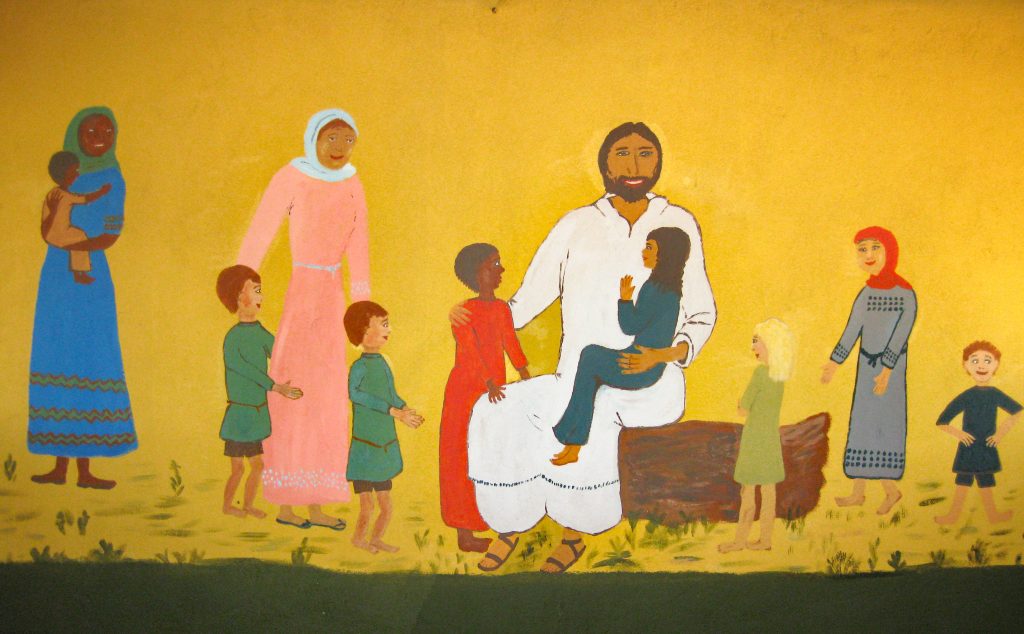|
Readings: 1 Samuel 2:12-17 and Matthew 18:1-7
[content warning: discussions of child abuse] Uniting Church President, Rev Sharon Hollis ended her prayer for this Sunday this way, May we do all we can to create safe and welcoming communities so that your good news might be proclaimed with joy and children might find life and hope in the gospel. Child Safe Sunday serves as a reminder of the important work that is being a safe church. A reminder to be intentional, vigilant, and consistent in our work to ensure our church community – its worship, activities, and ministries – prioritises the safety of the vulnerable (particularly in this instance, the children). Following the royal commission into institutional cases of child abuse, which exposed the extent of sexual abuse in churches and the paucity of institutional responses to prevent or address this abuse, the church has entered a new era. Not only did the truth-telling of the commission emphatically impact the church’s witness (and again the church bears full responsibility for this) but it compelled (and required) the church to take drastic action to ensure that such harm would not occur again. The church (like many other institutions) lost a great deal of trust and moral standing in society – and if it is to earn it back, if it is going to be able to be a city on the hill signalling the promised peace of God, it (we) must take up this drastic action in our life together – we must strive to be safe. Sometimes this drastic action can be seen as burdensome, as bureaucratic, as something that inhibits the central mission and purpose of the community. It might be seen as a case of institutionalism triumphing over community, or a case of secular authority restricting the church. Some might lament the times gone by where it was so much simpler, where things could be more casual and ad hoc, where anyone could be pulled in to help out, or a new activity could spring up without having to first go through various stages of checks and balances. Others might think that it is all well and good that these procedures and checks exist, but we don’t need that here, because we’re a small group, and all know each other. And yet, while much of the work done in the safe church process is done in order to meet legal and denominational requirements, and while sometimes it might not appear immediately evident how this relates to our central purpose and calling as disciples of Jesus, being and becoming a safe community is – fundamentally – about following Christ’s call to love God and neighbour with our whole selves. It is fundamentally in keeping with God’s own heart for the vulnerable. It is fundamentally reflective of God’s own anger toward any who would exploit their responsibility and power and endanger the spiritual life of a child. We heard two readings. In the first we hear of God’s disgust and anger at Eli’s sons, who abused their priestly office to exploit the people, to take for themselves the best of the community, to scorn that which people have offered to God, and misdirect it toward their own pleasure. Thus the sin of the young men was very great in the sight of the Lord, and the sins of Eli’s house would not be expiated, and it would be the young boy Samuel, who would be chosen to lead Israel as their priest and prophet. In the second, Jesus reminds his disciples that greatness comes through humility and childlikeness, and that to welcome a child is to welcome him. He then goes on to say, in no uncertain terms, that it would be better for a great millstone to be fastened around your neck and to be thrown into the sea than to be found to have put a stumbling block before a child. Jesus acknowledges that there will be stumbling blocks enough thrown up by the world and its pain… but to neglect, or harm a child, and so lay down a stumbling block oneself – woe to the Christian who does that! How many children have had stumbling blocks placed before by abusers and their protectors in the church? Could any find fault in a child who was abused, neglected, mistreated by someone in the church turning around and having no time for the church, no fondness for God? Could any find fault in their families and friends, being confronted with the breach of trust and the enormity of harm done, no longer being able to hear any good news in the words of Jesus? Such stumbling blocks are not readily put aside – after the royal commission it is of little surprise that many see the church as a house built on stumbling blocks, rather than the cornerstone of Christ. And so we return to those words from the President’s prayer. Because while we strive to be a safe church so as to protect the vulnerable from abuse and harm – we also do these things so that all we do might create safe and welcoming community in order that the good news of Jesus might be proclaimed with joy and children might find life and hope in the gospel. We work to be a safe church so that none might have a stumbling block placed before them, so that the children might hear the invitational beckoning of Christ, and so that we – by striving to be a people of welcome – might not only welcome the children, but welcome Christ. ** Image: Anonymous, Jesus Welcomes All, from Art in the Christian Tradition, a project of the Vanderbilt Divinity Library, Nashville, TN.
0 Comments
Leave a Reply. |
SermonsPlease enjoy a collection of sermons preached in recent months at the Kirk. If you have questions about the sermons, or attending a service reach out using the Contact Page. Categories |

 RSS Feed
RSS Feed